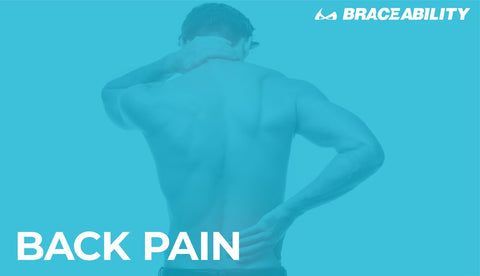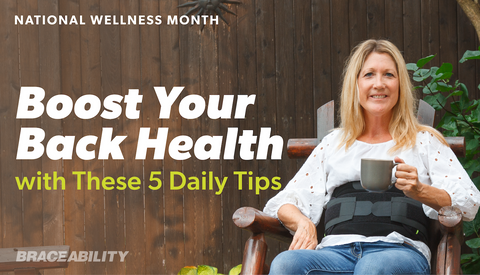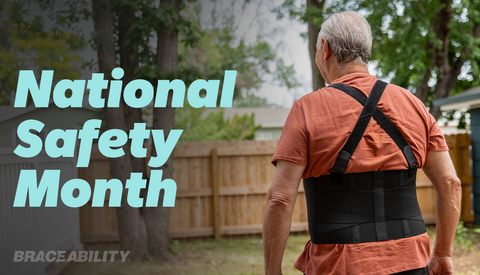Bulging Disc
What is a Bulging Disc?
Before you can understand what a bulging disc is it’s important to understand what your discs are. Essentially, the discs in your back and spine act as cushions between your spine and vertebrae. They are round in diameter and flat on the top and bottom and are securely attached to the vertebrae above and below them. These discs are made of a mixture of a soft inner layer and hard outer layer. A bulging disc occurs when the disc pushes out of its normal position and begins to invade the space of your spinal nerves. There are different kinds of bulging discs, some causing much more pain than others. In fact, the variation of bulging disc are so great that some people never know they have one, while other people have so much pain it affects their quality of life. If you are experiencing pain from your bulging disc, it is likely concentrated on one side of your body. This is because they usually bulge towards one side of the canal, whether that be right or left.
What is the Difference Between A Bulged Disc and Herniated Disc
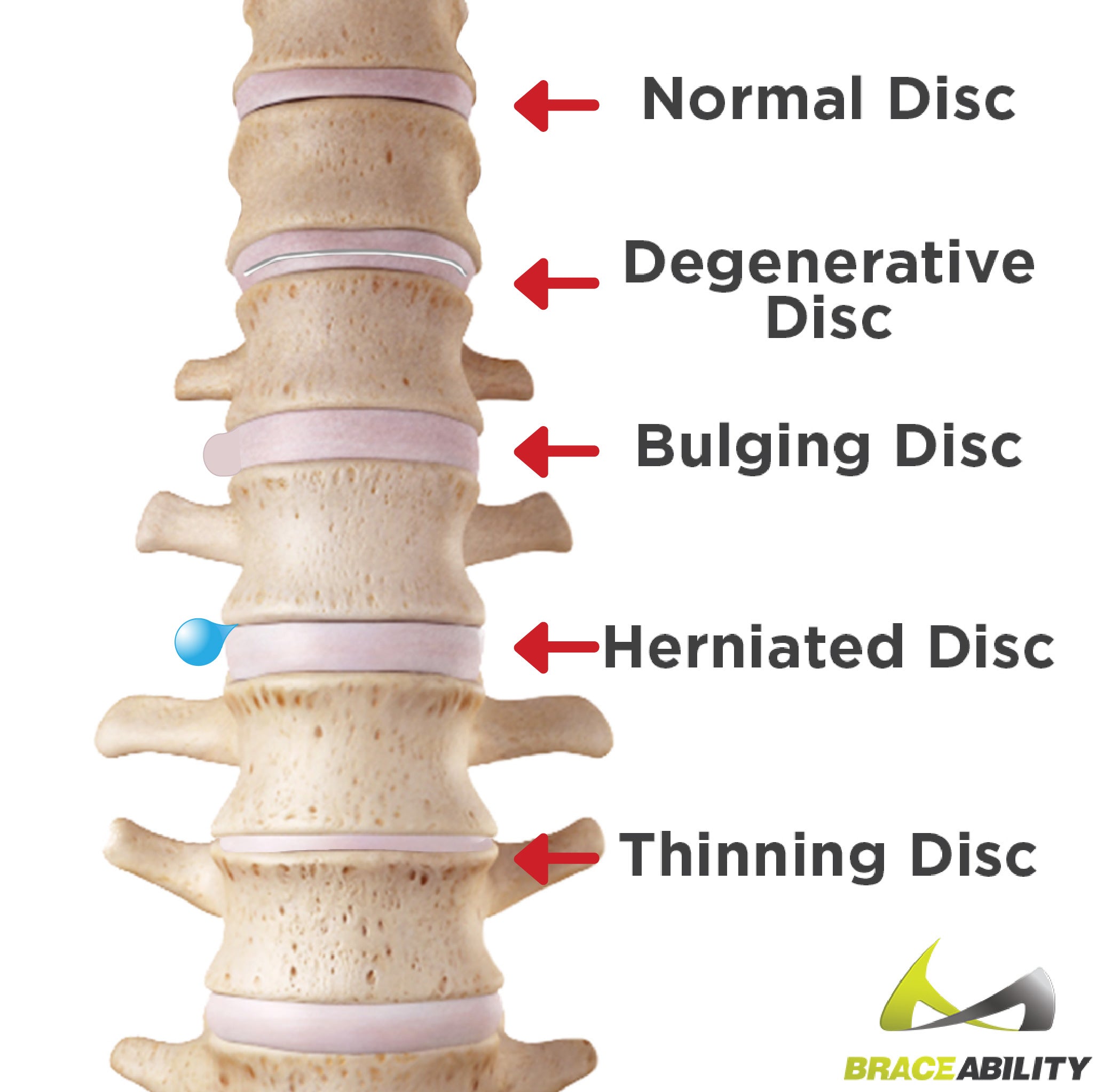 A bulging disc moves outside of the space it would normally be located in. The bulging affects a large portion of the disk, usually extending at the hard outer layer cartilage. A bulging disc is extremely normal as it’s considered a natural aging process, although it does have different levels of severity. A herniated disc happens when a crack in the hard cartilage causes the inner soft tissue to come out. Herniated discs in your spine are much more likely to cause pain, but just like a bulging disc, in many cases, they don’t. Besides herniated and bulging disc there are more issues that can occur with your spinal discs including:
A bulging disc moves outside of the space it would normally be located in. The bulging affects a large portion of the disk, usually extending at the hard outer layer cartilage. A bulging disc is extremely normal as it’s considered a natural aging process, although it does have different levels of severity. A herniated disc happens when a crack in the hard cartilage causes the inner soft tissue to come out. Herniated discs in your spine are much more likely to cause pain, but just like a bulging disc, in many cases, they don’t. Besides herniated and bulging disc there are more issues that can occur with your spinal discs including:
Thinning Disc: Similar to degenerative disc, with age the water that is found in the inner part of the disc decreases. This water is what gives the disc both width and height.
What Causes A Bulging Disc?
Most commonly, bulging discs are attributed to aging. This happens with age because the discs begin to lose water content. The loss of water causes them to become stiffer, flatter, and in general more damage prone. Outside of aging, any kind of minor trauma can potentially cause a bulging disc. Minor trauma places pressure on the inner soft core of the disk, stretching the outer layer, which makes it difficult to return to it’s original shape. People who may experience a bulging disc from something other than old age include those who:
-
Perform repetitive lifting, bending, driving, and standing
-
Use improper lifting techniques
-
Have played contact sports or do extreme athletic activities
-
Have a family history of spinal disc problems
-
Have been in a car accident or suffered any kind of severe trauma
-
Participate in excessive drinking or smoking
-
Have poor posture
What are Symptoms of A Bulging Disc?
Bulging disc can happen in a variety of areas along your spine, making there a variety of symptoms. As we’ve touched on before, it is not uncommon for there to be little to no symptoms of the bulging disc. Most commonly people experience some kind of pain, weakness of the muscles, or numbness in the area of the bulge. Men are more likely to have bulging discs and are more common with old age.
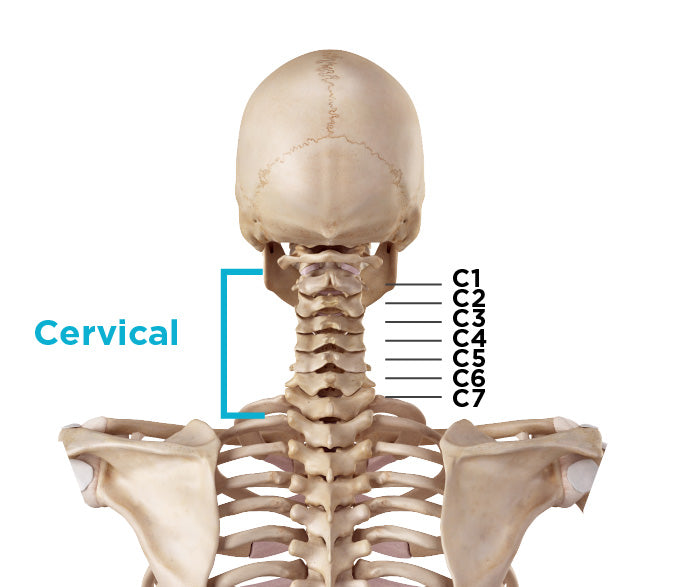
Bulging Disc In the Neck
A bulging disk in the neck, or cervical spine, occurs within the C2 through C7 vertebrae. If you are experiencing symptoms of a bulging disc in the neck you will most likely feel pain, tingling, numbness, and weakness in the neck region. Sometimes these sensations may even occur in your shoulders, arms, hands, and fingers. Because the neck acts as a support for the head (allowing it to move) there is a lot of pressure in this area, making bulging disc common.
Bulged Disc In the Lower Back
It’s estimated that approximately 90 percent of bulging discs occur in the lower back. This region in known as the lumbar region. Most commonly, bulging disc will occur between your L4 and L5 vertebrae, and between your L5 and S1 vertebrae. Bulging disc in this region exert pressure on lower body spinal nerve roots. Symptoms for a bulging disk in the back include pain felt in the pelvic region, legs, buttocks, and feet. These symptoms may be related to issues with the sciatic nerve. The sciatic nerve is a long nerve that begins at the bottom of the lumbar region, extending down through the back of the legs. Issues in this area are referred to as sciatica or sciatic nerve compression.
What is the Treatment for Bulging Discs?
There are a variety of different treatment options for bulging disc. In general, treatment methods include back bracing, medications, chiropractic, physical therapy, eating an anti inflammatory diet, injections, and occasionally surgery. We also highly recommend correcting your posture as a great treatment method and preventive measure for bulging disc.
-
Physical Therapy
If the pain you’re experiencing makes even moving difficult, a physical therapist may be helpful in your recovery. Physical therapist can assign stretches and exercises directed at improving your range of motion.
-
Chiropractor
Chiropractors will help you determine the kind of bulging disc you’re suffering from and even the underlying causes. Chiropractors focus on realignment of the spine for treatment.
-
Anti Inflammatory Diet
High levels of inflammation will weaken your bones, muscles, and joints. The higher levels of inflammation, the more likely you are to deal with bulging disc problems. Foods to incorporate in your diet include leafy green vegetables, coconut oil, and olive oil.
-
Injections/ Surgery
Doctors most often treat bulging discs with some type of steroid injections to control the pain and symptoms. Roughly 10 percent of people who suffer from bulging disc will get corrective surgery.
Braces for a Bulging Disc
To treat a bulged disc through bracing you will want to use a back brace with a stabilizer. This means that a rigid back panel is necessary in the treatment of a bulging disc. Depending on the location of your bulged disc there are a variety of different brace options. If your lumbar region is injured you will need a short brace focused on stabilizing your lower back. If you are having problems with your thoracic back the best brace option for you will be longer. These brace options will help to stabilize and immobilize your back.
Proper Posture for Prevention and Treatment for a Bulged Disc
Proper posture, when seated, standing, walking, lifting—you name it, is important for both preventing injuries to the back and for bulged disc treatment. Poor form when lifting is a common cause of a bulging disc. Read BraceAbility’s proper lifting techniques blog to prevent these injuries from occurring. The Industrial Back Support Belt can also add support and promote correct form when one is lifting.
Sitting hunched over for long periods of time can cause the discs in your spine to become compressed. Slouching can also overstretch your spinal ligaments and strain your disc. If you are looking for a brace to improve your daily posture, check out this adjustable posture corrector. The brace gently pulls your shoulders back and trains your muscles to have proper posture. Good posture has additional benefits such as higher energy levels, migraine relief, prevention of back and shoulder issues, support for already existing chronic back pains, and much more. To help your posture, view more posture correcting brace options.








